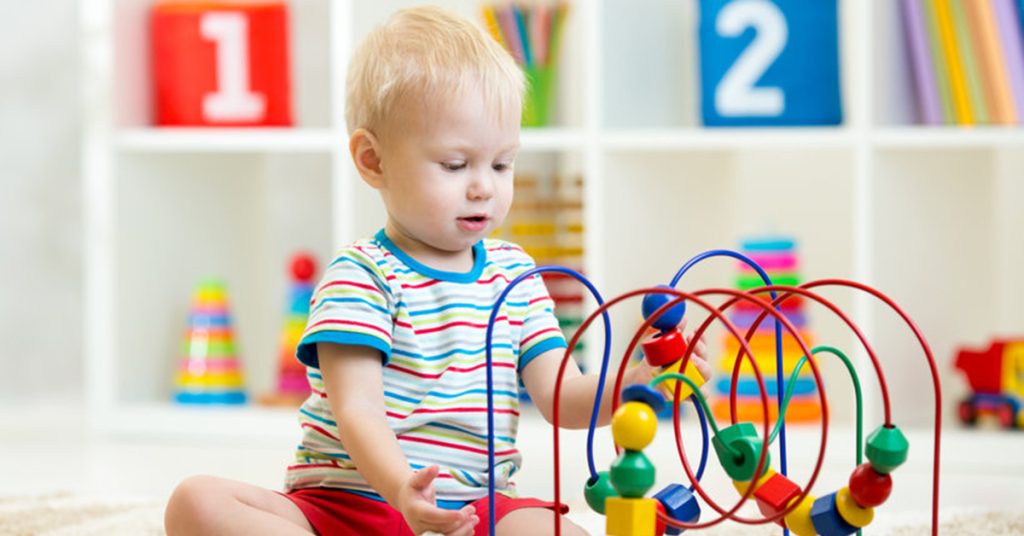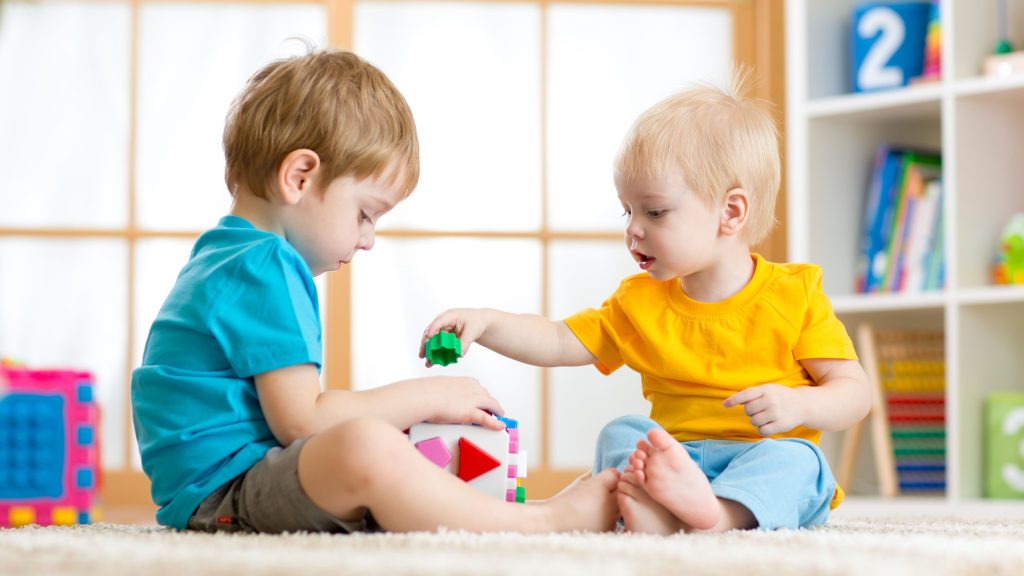Posts Tagged ‘“unsafe toys”’
Don’t Rush; Reminders to Help Massachusetts Families Buy Safe Holiday Toys in 2021
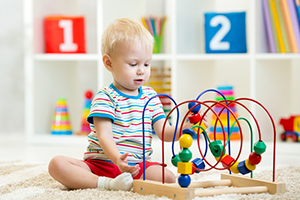
Don’t rush your holiday toy shopping. Take time to read and follow age-appropriate labels before you buy toys.
Many of us are feeling quite stressed about holiday shopping as we watch the news. Still, when you shop for a child, safety is essential. Slow down and look for a fun, safe and age-appropriate toy that will bring joy, not injury, into your home.
Read Age-Appropriate Warning Labels, Toy Packaging and Online Descriptions
You may think you are buying a safe because the toy was featured on a morning news program or has received top reviews online. But despite your best intentions, you may not actually be purchasing the same toy. To avoid buying a so-called counterfeit toy, look for reputable sellers, such as department stores. Try to purchase from brick-and-mortar stores.
Before purchasing or at home, closely examine the packaging on the toy and make sure it matches the manufacturer’s online description. If you purchased the toy online, the toy packaging should also match the description on Amazon or the online marketplace. Once the toy arrives, open and inspect the box contents.
Everything should be consistent, including the age-recommendation labels.
Check for Toy Recalls
The packaging is a tool to help you shop, as is the CPSC website, which you can check for toy safety recalls. In addition to recalling toys, the CPSC has also recalled many inclined infant sleepers over the past two years. Last summer, the commission approved a new federal safety standard for infant sleep products which will take effect in mid-2022. Here is one of our recent blogs on infant sleep products.
U.S. Toy-Related Injuries and Deaths by Age 2018-2020
No one wants to think about the possibility of a child suffering an injury while playing with their own toys. Yet this is a risk in when so many toys are sold online through Amazon, Ebay and other online marketplaces. Independent sellers can sell on these sites or quickly build their own websites, optimize them in the search engines, then close sites down.
Between 2018 and 2020, 50 children were killed in toy-related accidents across the U.S., according to CPSC data released in May 2021. Many children suffered suffocation and other injuries in accidents involving toys with small parts, balls, stuffed animals or accessories. Two children drowned on water toys. Seven children died in accidents involving non-motorized scooters and two were killed on nonmotorized riding toys.
In 2020, nine children were killed and nearly 150,000 children age 14 and younger were treated for toy-related injuries in hospital ERs. Here is a breakdown of toy-related injuries by age during 2020:
- Children under 5 suffered 40 percent of all toy-related injuries.
- Children age 12 and younger suffered 73 percent of toy-related injuries.
- Children age 14 and younger suffered 75 percent of toy-related injuries.
Common Toy Shopping Mistakes
As we have discussed, you can reduce the risk of injury in your household by reading age recommendations and carefully inspecting toys and packaging. But you can also challenge yourself if you have these thoughts:
Buying Holiday Toys Because Just They Are Available or Priced Right
Earlier this month, the Toy Association shared positive news: 76 percent of parents surveyed said they read age recommendations before buying toys.
However, many can be swayed. About 65 percent of parents said they may buy a counterfeit/knock-off toy if their first choice was unavailable. Meanwhile, 63 percent said they could be influenced by a lower price.
Buying Outside Age-Recommendations for Toys
“This toy is marked age 8 and older, but my 5 ½ year old is up for challenging toys .” Sound familiar? The Toy Association reports 68 percent of parents share this thought and would buy a toy outside age recommendations.
Consider age-recommendation labels an important tool, designed to protect your child from choking, an eye or head injury or a broken bone. Age recommendations are not arbitrary; they are based on a toy’s performance under federal toy safety requirements.
For example, toys with small parts or balls have to undergo the “small parts cylinder” test. The cylinder has a diameter of 1.25 inches, with a slanted bottom opening 1 to 2.25 inches. If a toy or small part passes through the cylinder, it has to carry an age-warning label that states, “Choking Hazard – Small Parts. Not for Children Under 3 Yrs.” Read more about the small parts regulations for toys.
Read more in our Project KidSafe toy safety series.
Free Legal Consultation – Boston Product Liability Attorneys
Founded in 1992, Breakstone, White & Gluck has recovered millions of dollars in compensation for victims of negligence and wrongdoing in Massachusetts. Consistently recognized by Super Lawyers and Best Lawyers, our personal injury lawyers specialize in product liability, holding companies responsible for injuries and wrongful death caused by defective products, toys and vehicles.
Breakstone, White & Gluck is located in 2 Center Plaza in Boston, across the street from the Government Center T stop and Boston City Hall. If you have been injured, Breakstone, White & Gluck offers a free legal consultation. Learn your legal rights by calling and speaking with one of our attorneys today at 800-379-1244 or 617-723-7676 or use our contact form.
How to Avoid Buying a Recalled Toy or Product This Holiday Season
 When a product is recalled, you may expect it will be removed from store shelves or online marketplaces. This is not always a safe assumption. In this year’s Trouble in Toyland report, U.S. PIRG reports several toys which were recalled this year were still being sold afterward on popular websites. Last year, a Wall Street Journal investigation found Amazon was selling thousands of unsafe or banned products.
When a product is recalled, you may expect it will be removed from store shelves or online marketplaces. This is not always a safe assumption. In this year’s Trouble in Toyland report, U.S. PIRG reports several toys which were recalled this year were still being sold afterward on popular websites. Last year, a Wall Street Journal investigation found Amazon was selling thousands of unsafe or banned products.
These are upsetting headlines. The Consumer Product Safety Commission (CPSC) recalls toys when they pose a safety hazard to children. Recalls are typically only called after a report or several reports of injuries or near injuries.
Once a toy is recalled, consider it unsafe to use. Our Boston product liability lawyers share our safety tips for steering clear of unsafe toys this holiday season:
Look Up Past Toy Recalls
Visit the CPSC website and review product recalls for 2020. According to U.S. PIRG, 10 products were recalled in the 12 months between the release of its 2019 and 2020 report.
You can visit this website after you have selected a toy and before you make a purchase. Or it may be helpful to start your holiday shopping there. Search for “toy recalls” or look through all the product recalls. Note that this website does not include automobile recalls. You can find these on the National Highway Traffic Safety Administration (NHTSA) website.
Beware of Amazon, Ebay and Marketplace Websites
Some retailers only offer their own products online. Others – such as Amazon and Ebay – are marketplaces where different vendors sell products and toys. These products may be new or they may be used.
Both the sellers and websites have a responsibility to make sure they are not selling recalled products.
In August 2019, the Wall Street Journal reported that Amazon was selling more than 4,000 items which federal agencies had declared unsafe or banned. Others had misleading labeling. At least 2,000 listings were for unsafe toys and medications.
The story showed the challenges Amazon has regulating its own marketplace. If you shop on Amazon or EBay, look for information about the seller. Is a company the seller or an individual? If you have never heard of the seller, you may not want to make a purchase.
Watch for Small Parts
When buying online, one potential danger is buying a toy which contains small parts. To protect your children, always read age recommendations and look for warning labels.
Toys which are designed for children under age 3 should be labeled if they contain small parts. Toys for children age 3 to 6 must also be labeled if they contain small parts. Read our blog on identifying small parts and toy safety warnings.
Beware of Purchasing Toys on Social Media Sites
You may have heard of Facebook Marketplace or other social media sites where you can sell used toys and products. Avoid buying used toys for children here during the holidays. We also suggest you avoid buying toys from these sites during other seasons, but especially during the holidays when many of us just wait for online sales to pop up.
There is no quality control. In most cases, the product is no longer in the packaging so you can’t read the safety warnings and age recommendations.
If you buy a used product this way, you really have no way of knowing when it was purchased. You may not have a product number or product instructions.
Children’s products, such as cribs, car seats and strollers, may carry the greatest risks. These products are frequently recalled and many model types look similar. While it is illegal to sell recalled products, it happens.
One frightening story came after Fisher Price and Kids II issued their crib recalls in early 2019. Despite this, 1 in 10 daycares was still using a Fisher Price Rock n’ Play sleeper in August 2019. In Nov. 2019, Consumer Reports reported found hundreds of the recalled sleepers available online, on sites such as Craigslist and Facebook Marketplace. In addition, Consumer Reports warned other products – including Ikea dressers recalled in 2016 were still being sold.
Free Legal Consultation – Boston Toy Safety Lawyers
With more than 100 years combined experience, Breakstone, White & Gluck of Boston specializes in the representation of clients injured by unsafe or defective toys and products. We are writing about toy safety this holiday season to help parents and families make safe shopping decisions. Read our past toy safety blogs.
For a free legal consultation, contact the Boston toy safety lawyers at Breakstone, White & Gluck at 800-379-1244 or 617-723-7676. You can also use our contact form.
Trouble in Toyland Report Shares Toy Safety Tips for Holiday Shoppers
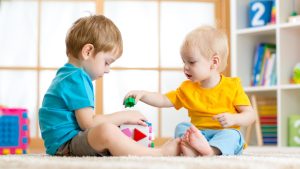 Families often enjoy looking through toy catalogs together this time of year. After seeing what excites your child, you may be tempted to immediately order their holiday gifts. However, before you do, we encourage parents and grandparents to check the Trouble in Toyland report.
Families often enjoy looking through toy catalogs together this time of year. After seeing what excites your child, you may be tempted to immediately order their holiday gifts. However, before you do, we encourage parents and grandparents to check the Trouble in Toyland report.
The 35th anniversary Trouble in Toyland report was recently released. This year, U.S. PIRG warned about the dangers of:
- Mislabeled choking hazards
- Flocked animal figures (toys with small attached pieces)
- Recalled toys which may still be available online
- Noisy toys
- In-app purchases
- Not advisable for children
Choking Hazards
Parents are advised to look for small part warnings on toys. “Small part” is not a subjective term. It is anything that fits within the Consumer Product Safety Commission’s toy test cylinder. The test cylinder measures 2.25 inches long and 1.25 inches wide and is roughly the size of a young child’s throat. A small part may be a game piece or a marble of the right size. It may also include a toy accessory, such as doll clothing.
The most common “small parts” warning: “WARNING: CHOKING HAZARD–Small Parts. Not for children under 3 years.” Toys designed for children ages 3 through 6 must also carry warning labels indicating they are not safe for children under 3.
Parents can become familiar with the risks by reading this year’s Trouble In Toyland. Make it a priority not to purchase a product with small parts and bring them into your home. Always read toy safety and age appropriate labels. Doing so puts you on a path to protect your family.
Flocked Toys
If you purchase a toy figurine or doll that comes with accessories, such as ribbons or clothing, remember your child can put those small parts in their mouths. Calico Critters – the popular animal family figures – are now under scrutiny.
One child was killed while playing with a set containing a small pacifier in New Mexico, according to a court filing. Another child in Utah also choked on the pacifier accessory, according to the a local news website, and shared in the Trouble in Toyland report. Both children were under 3 years old.
Fortunately, there are many versions of toys. If you find a toy you like and it has small fabric parts, keep looking until you find one without removable accessories.
Online Toy Shopping
Trouble in Toyland shared a valuable insight about searching for holiday toys on Amazon. If you search for “toys for 2-year-old boys,” for instance, you may see a number of listings which do not provide a small part warning. Do not trust that searching by year means toys are screened for safety. Remember, Amazon is a marketplace of merchants, not just one company. Closely look at product descriptions before making a purchase. In addition to reading reviews, you want to confirm the details. Look at the product picture, then read the description. Double check the product packaging once it arrives by mail and open it to confirm it has the parts you expected.
Beware of recalled toys as well. Since the 2019 Trouble in Toyland, the Consumer Product Safety Commissioned issued 10 toy recalls in the U.S., according to this report. When a product is recalled, it should be immediately removed from the store shelves and online listings. Some toys were still being sold online after recalls. Researchers even found one toy – a Fisher-Price Barbie Dream Camper which was recalled in February 2019 – still on sale. The camper was an outdoor riding toy for children. The CPSC received 17 reports of campers continuing to travel after the foot pedal was released.
Not Advisable For Children
Also featured was a section called, “items not advisable for children.” These items are not really toys, but are given to children as toys. At the top of the list is high-powered magnet desk sets. We wrote about the dangers of high-powered magnet sets last holiday season. Magnet sets may seem like fun gifts for adults, but you should never purchase one because they are so dangerous and the small parts can stick around your home forever. Children can be tempted to play with these magnets and swallow them. At this point, the magnets can attempt to connect together in a child’s stomach. The magnets touched on some serious personal injuries.
In September 2020, a 9-year-old boy took two magnets from a Neutronball building set and placed them on his lip, pretending to have a piercing. He then swallowed them and had to seek medical treatment at a hospital. In May, another 9-year-old swallowed parts from a Zen Magnets LLC set. She hid this from her parents for a week, until she began suffering intense stomach pain. She required surgery, but survived.
Beware of Digital Apps
Parents may be asked to sign up for an app related to a “smart toy” their child received as a gift. Or a child may have received a tablet or cell phone and try to sign up for apps themselves.
While there is a case to be made for limiting your child’s screen time overall, beware of giving your child access to digital apps. These can be tempting and children may like the graphics and thought of winning a prize. The Trouble in Toyland report mentioned one app called Coin Master. This is rated for ages 13 and over, though the graphics may easily capture the attention of a younger child.
We are sharing this story because Coin Master offers in-app purchases. The most expensive option is $99.99. Children may only see higher options once they get into the game.
Free Legal Consultation – Boston Toy Safety Lawyers
Breakstone, White & Gluck has over 100 years combined experience representing individuals who have been injured by the negligence or wrongdoing of others. Our firm is highly experienced in the area of product liability and injuries caused by defective products. We are writing about holiday toy safety as part of our Project KidSafe campaign, where our goal is to protect children from injuries. For the past 8 years, our attorneys have also donated 30,000 bicycle helmets to children across Massachusetts to protect against head injuries.
If you have been injured, learn your legal rights. For a free legal consultation, contact Breakstone, White & Gluck of Boston at 800-379-1244 or 617-723-7676 or use our contact form.
Holiday Toy Safety: Check for Age Recommendations and Choking Hazard Labels
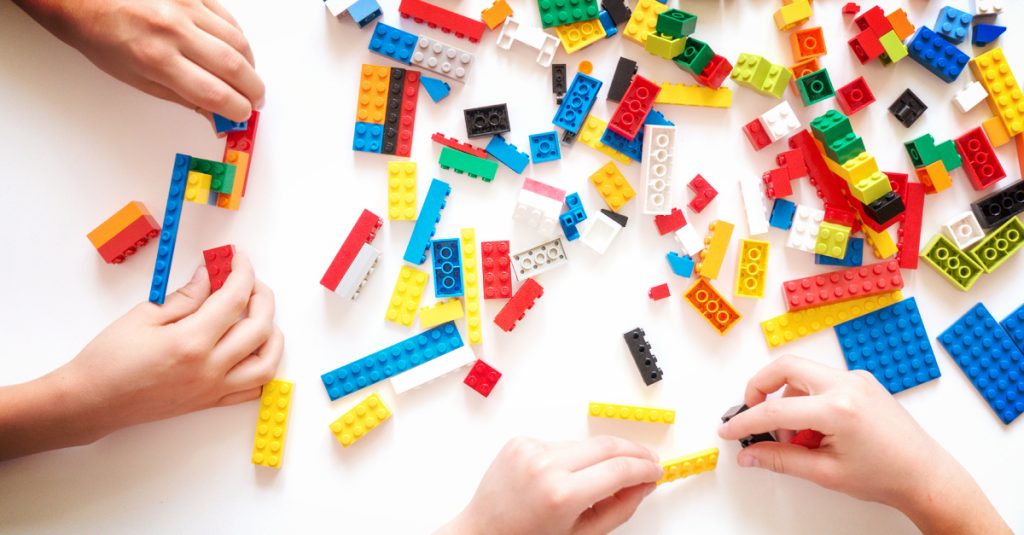 Age recommendation labels are the first tool you have in selecting safe holiday toys. Anyone purchasing toys for young children wants to familiarize themselves with the choking hazard-small parts label.
Age recommendation labels are the first tool you have in selecting safe holiday toys. Anyone purchasing toys for young children wants to familiarize themselves with the choking hazard-small parts label.
Warning: Choking Hazard – Small Parts. Not for Children Under 3 Years
Each year, children suffer choking injuries and deaths after consuming food or putting small objects in their mouths. In the late 1970s, the Consumer Product Safety Commission (CPSC) led a three-month study of an estimated 3,800 injuries involving children under age 10. It was determined that children under age 3 suffered more than half of all these injuries. More than 50 children under 3 died in accidents involving small parts.
With those numbers, the CPSC announced the small parts regulation, which became effective on January 1, 1980. Since then, toy manufacturers have been required to test toys and parts using the small parts cylinder test.
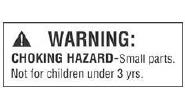
This cylinder has a diameter of 1.25 inches. The bottom of the cylinder is slanted, opening 1 to 2.25 inches. Toys which fall through the cylinder must carry the choking hazard – small parts warning and state not for children under 3 years old. Toys may also require labels if they fit through the tube, but break it during subsequent “use and abuse” testing (Source: U.S. PIRG, Trouble in Toyland 2018).
Toys which are too large can be sold without the choking hazard label, though they may require another type of labeling.
Small Parts Warning for Children Between Ages 3 and 6 Years
Any small part intended for children between age 3 and 6 must carry the same labeling: “Warning: Choking Hazard — This toy is a small part. Not for children under 3 years.”
Small Parts Warning – Small Balls
There is a separate federal standard for small balls, according to U.S. PIRG. Balls with a diameter of 1.75 inches are banned for children younger than 3 years of age.
Small balls must carry this age-recommendation label: “Warning: Choking Hazard — This toy is a small ball. Not for children under 3 years.” A similar label is required for toys which contain small balls: “Warning: Choking Hazard–Toy contains a small ball. Not for children under 3 years.”
Toymakers are required to test and use age recommendation labels. All toys intended for children age 12 and younger must undergo third-party testing and meet the most recent version of the federal safety standard, ATSM F963.
But there are times when parents and anyone buying a toy should be skeptical. Toymakers have made errors in labeling and there can be miscommunication between manufacturers and retailers when toys are displayed without packaging. Online product descriptions may not be accurate.
Remember These Toys Have Small Parts!
- Marbles
- Magnets
- Game pieces (such as the Monopoly characters)
- Legos and building bricks
- Small puzzle pieces (and cardboard pieces are a danger because small children can chew them and choke)
- Button batteries
- The clothing and parts on stuffed animals and dolls
- Pens and pencils with caps which can become loose
Additional Toy Safety Standards for Children Age 3 and Younger
While we are talking about small parts, we also want to remind parents of other federal toy safety guidelines for children under 3.
- Toys and children’s products must not have sharp points or edges which can potentially injure children.
- Paints and surface coating cannot contain more than .06 percent lead or other hazardous materials.
- Children’s pajamas, clothing and products which fail to meet flammability limits.
The best way to stay informed is to check the CPSC website for toy safety recalls and product warnings.
Final Points on Toy Safety for Young Children
Carefully inspect all toy sets and stuffed animals before and after purchase. Open boxes, handle the pieces yourself before giving. If you buy online, check if the box matches the online product description. Because of the demand for toys near the holidays, it’s not unusual for shoppers to receive a toy similar to what they ordered.Decide whether the toy will be safe near your child and their siblings. You should always consider younger siblings when buying gifts. If they are not at least 3 or older, wait another year. Also pause if the younger sibling just isn’t ready.
If your children are the right age and ready, purchase a secure container to keep the small parts in. Keep this container separate from other toys in your home and be mindful of not letting small pieces scatter.
Finally, supervise children whenever they play with small parts. Even older children can find themselves in dangerous situations at times when handling small pieces. This is especially true with new toys. So as they play, sit with them at the table or just stay in the room so you can help.
About Breakstone, White & Gluck – Boston Toy Safety Lawyers
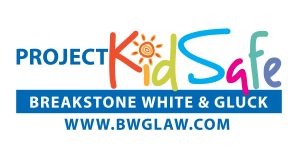 Our Boston personal injury lawyers represent clients in all personal injury matters, including motor vehicle accidents, medical malpractice, premises liability, wrongful death and cases involving injuries caused by defective products and unsafe toys. We share our holiday toy safety series as part of our Project KidSafe campaign.
Our Boston personal injury lawyers represent clients in all personal injury matters, including motor vehicle accidents, medical malpractice, premises liability, wrongful death and cases involving injuries caused by defective products and unsafe toys. We share our holiday toy safety series as part of our Project KidSafe campaign.
To learn more, visit our toy safety page. You can also visit our website to learn more about our attorneys and their experience.
Toy Safety: 10 Worst List Highlights Dangerous Toys
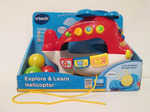 As the holiday shopping season begins, a watchdog organization is reminding consumers that not every toy on the shelves is safe.
As the holiday shopping season begins, a watchdog organization is reminding consumers that not every toy on the shelves is safe.
The organization W.A.T.C.H., or World Against Toys Causing Harm, Inc., has released its annual list of 2012 “10 Worst Toys.” W.A.T.C.H. says the toys on the list can cause children to choke, have sharp parts and carry misleading labels. The defective toys can be found online and in stores, at major retailers such as Toys “R” Us, Walmart and Amazon.
Dangerous toys seriously injure and kill children every year in the United States. In 2010, 17 children were killed in toy-related accidents. The majority were related to choking on balloons, small balls and rubber balls. The same year, about 181,500 children younger than 15 were treated in hospital emergency departments for toy-related injuries.
If you are shopping for young children, take a look at this year’s “10 Worst Toys” list. We have also provided a list of websites to help you make safe purchases below.
The Avengers Gamma Green Smash Fists
Potential for blunt impact injuries and there are no warnings on the package.
Playful Xylophone
Potential for choking injuries.
Power Rangers Super Samurai Shogun Helmet
Potential for impact and puncture wound injuries.
Water Balloon Launcher
Potential for choking and facial injuries. Varying age recommendations online and on the package.
N-Force Vendetta Double Sword
Potential for Impact injuries.
Explore & Learn Helicopter
Potential for strangulation and entanglement injuries. Cord is twice the length allowed by law.
Spinner Shark 4-Wheel Kneeboard
Potential for impact injuries.
Dart Zone Quick Fire 12 Dart Gun
Potential for eye injuries.
Bongo Ball
Potential for impact and other serious injuries. Children are encouraged to climb inside the inflatable ball. The toy and the packaging have contradicting instructions about supervision.
Magnetic Fishing Game
Potential for choking injuries. Different age recommendations online and on the packaging.
Related:
Toy Safety Fact Sheet, Safe Kids.
Toy Safety, U.S. PIRG.
Dangerous Toy Report Details Lead, Choking Hazards, Breakstone, White & Gluck.


